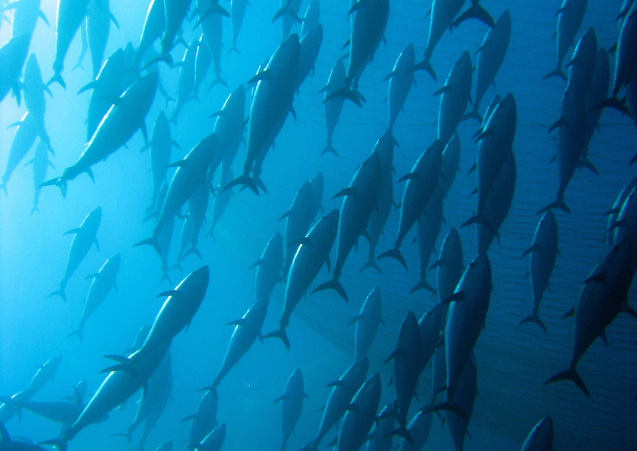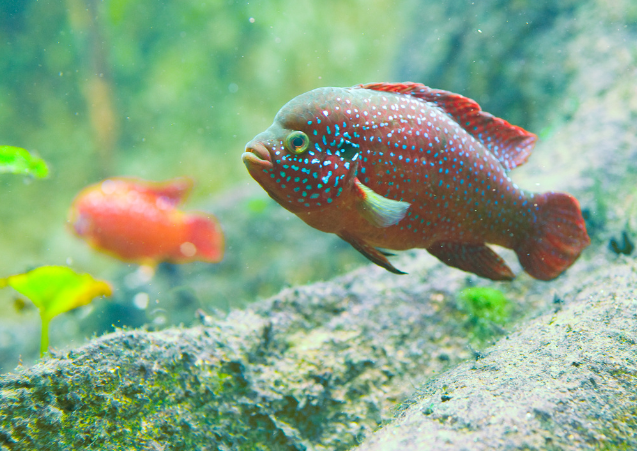
Sturgeon Verses the Endangered Species Act; A Warning to the U.S. Seafood Industry
Commercial aquaculture is under attack, and we need your help! As an increasing demand for seafood collides with the effects of a changing climate, the future of the aquaculture industry grows increasingly dim. Why? Because the outdated Endangered Species Act of 1973 doesn’t recognize the difference between wild and farmed seafood.
THE STURGEON PROBLEM
The U.S. sturgeon aquaculture industry has been battling the National Marine Fisheries Service (NMFS) and the U.S. Fish & Wildlife (USFWS) service for more than 2 decades over the potential economic impacts that an Endangered Species Act (ESA) listing of wild foreign sturgeon populations would have on the international sturgeon aquaculture industry.
The problem is there is no legal delineation between captive-bred and wild fish populations, so a Federal ESA listing of wild sturgeon populations in a foreign country would effectively close the U.S. border to farmed sturgeon imports and prevent the farming of non-native sturgeon within U.S. borders.
NOT JUST STURGEON
This lack of a distinction between captive-bred and wild sturgeon can be considered a legal “canary in the coal mine” for an ESA listing of other wild or captive-bred fish populations and the potential commercial impact of such listings.
Atlantic salmon is one possible example. There is mounting evidence that populations of pink salmon (Oncorhynchus gorbuscha) are expanding their range into the Arctic and North Atlantic Oceans. As a migratory species they have established self-sustaining populations in rivers in northern Norway and have been reported in Scottish and Irish waters. Given large enough populations, pink salmon will outcompete native Atlantic salmon in their native waters.
A single petition from a U.S. conservation group will force the Federal government to initiate the ESA process. An ESA determination of “Threatened” or “Endangered” of any wild foreign population of Atlantic salmon could force the closure of all Atlantic salmon imports into the U.S., wreaking havoc on the seafood industry. In 2023, the US imported over 218,000 metric tons of fresh or chilled salmon fillets worth $2.82 billion.
Atlantic salmon is only one example. Given the changing temperature patterns in the world’s oceans and the subsequent impacts on fish species found in foreign waters, many other fish populations, both farmed and wild captured, could be at risk of an ESA listing and possible closure to U.S. markets.
THE ONLY SOLUTION
Commercial fish farmers currently being impacted by the ESA endangerment listings are trying to fight back using various methods like 4(d) exceptions and Designated Population Segments. However, these methods are not sustainable: the 4(d) exemption is only for “Threatened” species and is admittedly “unworkable” according to USFWS; and Congress has directed the USFWS and the NMFS to use DPS’s “sparingly” and are unlikely to provide a DPS for any non-native species.
Considering the limited tools available for commercial aquaculture operations to stay in business when wild populations decline, the industry must push to amend the ESA so that there is a clear distinction between wild species and those held in captivity. Updating this outdated part of US law is the only real solution to keep commercially farmed fish in the marketplace when listing recommendations and final determinations are made.
USFWS and the NMFS will continue to accept petitions to protect wildlife when deemed necessary, even though the agencies themselves recognize the vital role that aquaculture plays in species repopulation and protection from extinction. With half of the world’s supply of fish, crustaceans, and mollusks now being farmed rather than caught, a permanent solution must be achieved to save the future of both commercial aquaculture and sustainable fishing operations for the US and global market.
We call on all members of the seafood industry to recognize the need for an amendment to the ESA. If such an amendment is passed into law, then commercial aquaculture can continue to operate without the risk of ESA protections banning their fish from the marketplace. Now is the time for action, join the SIAA today!
A DEEPER DIVE
On August 25, 2021, the USFWS proposed to list the Amur sturgeon as endangered, and on May 22, 2022, the USFWS proposed to list the Russian sturgeon, ship sturgeon, Persian sturgeon, and stellate sturgeon as endangered species. Both proposed rules apply to fish found in their native range, i.e. the wild, and in captivity, i.e. fish farms. USFWS claims that the ESA does not permit it to distinguish between fish in the wild and fish in captivity, thereby criminalizing the trade of the listed farm-raised sturgeon or products, like caviar, derived therefrom.
Of course, this is an absurd result and would actually force the depopulation of the captive-bred sturgeon stocks, which, of course, would become worthless when the endangerment finding goes into effect. Furthermore, applying the ESA to captive-bred fish could actually result in increased poaching of wild sturgeon because of increased demand for those species found in their native range. The World Sturgeon Conservation Society (WSCS), an environmental NGO committed to sturgeon protection and management, stated in a May 6, 2024, letter:
If these proposed rules are finalized, they will substantially limit U.S. domestic market access for farmed sturgeon meat and caviar. This could lead to illegal harvesting, poaching and smuggling of autochthonous species in North America. The proposed listing would then have an adverse effect upon US sturgeon conservation as the aquaculture industry reduces pressure on wild sources and renders poaching less lucrative.
Over the past 40 years, 15 of the world’s sturgeon species have been granted ESA protections and removed from US commercialization. Looking at the state of these sturgeon populations today, it is unfortunate to see that the ESA listings have not achieved the intended conservation benefit and have had little impact on species recovery. Outside of the USA however, where fish farms can breed endangered species in captivity, the raising and restocking of the endangered wild sturgeon populations is a possible means to combat extinction.
The remaining 12 sturgeon species not currently listed under the ESA have also been petitioned for endangerment status, meaning it is just a matter of time before all sturgeon products become illegal in the USA. With all sturgeon products currently being sourced from sturgeon farms, and with the US being the largest consumer of products like caviar, many aquaculture operations depend on the US caviar market to survive. If their fish are listed as “Threatened” or “Endangered” and they are forced to shut down, then sturgeon aquaculture operations will not be utilized for any recovery efforts. It would be both ironic, sad, bizarre and total failure of public policy for USFWS to issue an endangerment finding that actually increases the likelihood of a species’ extinction. Of course, fish raised in captivity raised for food should not be considered endangered under the ESA.
In addition to the current listing decisions pending for 5 sturgeons, the USFWS has already begun considering listing the Siberian and white sturgeon as the next threatened or endangered fish species but has not yet proposed a rule for either. Furthermore, a similar legal rationale is likely be applied to other commercially farmed species such like the example of the Atlantic Salmon. It was from these concerns that, on December 1, 2023, H.R. 6546 was introduced into the House of Representatives.
The H.R. 6546 legislation will allow the USFWS, when making an endangerment finding, to distinguish between fish raised in aquaculture and fish found in their native range. The WSCS endorses this legislation which it believes “will further the goals of the Endangered Species Act (ESA) by protecting endangered fish while permitting the farming of those species.” This commonsense solution preserves trade in traceable farm-raised fish while protecting natural stocks. If enacted, this legislation would allow for the continued import and sale of farm-raised fish and products derived therefrom originating from traceable sources whose practices abide to the strictest protocols of transparency, sustainability, and who have contributed to the preservation and repopulation of endangered stock. The Water, Wildlife and Fisheries Subcommittee of the House Natural Resources Committee, is currently considering this legislation. Furthermore, language was included in Section 134 of the Department of the Interior, Environment, and Related Agencies Appropriations Act of 2025
H.R. 8998, which passed the House of Representatives on July 24, 2024, that would prevent the Secretary of the Interior from implementing, administering, or enforcing a proposed or final rule that applies to fish raised in fish farms. However, to ensure these pending endangerment findings as applied to farm-raised fish don’t go into effect and to provide Congress the time needed to appropriately consider this matter.
We respectfully request that your organization take appropriate steps to ensure that any endangerment finding does not apply to fish raised in captivity. For more information, please contact us at: info@siaausa.com







